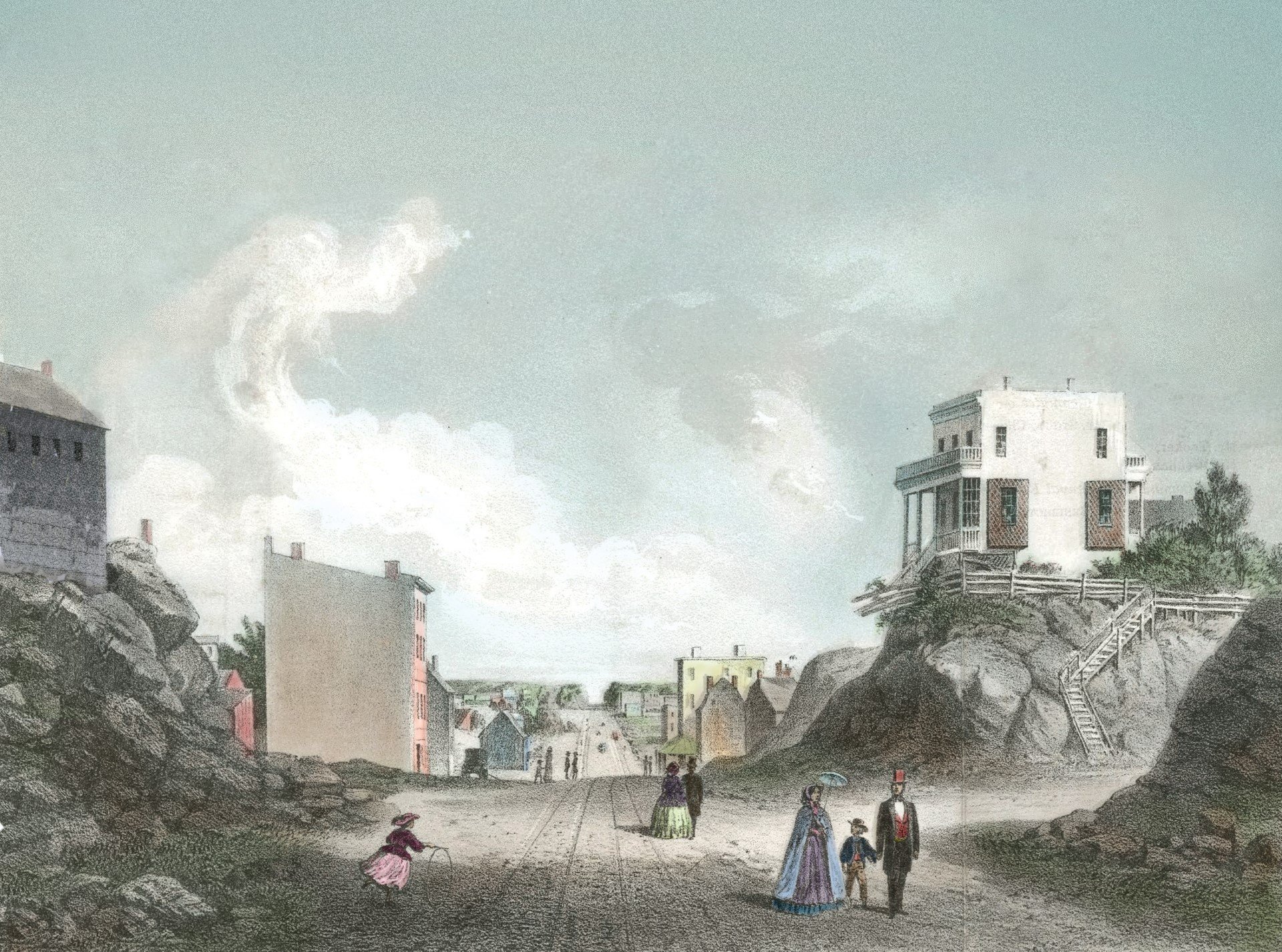Gotham’s Grid: The History of the Manhattan Grid Plan from 1624 to 2024
View of 2d Ave looking up from 42d St, 1861, Valentine's Manual, colorization by Alex Camlin.
“I’m on First and First. How can the same street intersect with itself? I must be at the nexus of the universe.” – Cosmo Kramer, Seinfeld, 4/30/1998
Manhattan’s physical identity is defined by two prominent features: its skyline and its street grid. Despite the 1811 grid plan’s global fame, its origins and impacts are shrouded in myth and mystery. This course will provide a deep dive into the history of Manhattan’s iconic street layout, from the unplanned Dutch town to the dense modern city. The creation of the plan was a response to the chaotic street patterns of newly American New York, rapidly expanding up Manhattan. Ironically, the eminent three-man commission charged with making a plan actually gave it little thought (two of them were much busier planning the Erie Canal). Yet the rigid street plan they ordained to pave over Manhattan has become an enduring urban model. Some call it the Greatest Grid; others consider it Gotham’s worst mistake. Love or hate it, there’s no denying its importance.
We will cover a series of related topics, including New York’s growth before the Grid Plan; early debates and plans prior to 1811; the formation of a planning commission; the life and times of surveyor John Randel Jr.; the 1811 Grid Plan and the Commissioner’s Remarks; from plan to reality in the 19th century; the Plan’s long run impacts on Manhattan’s real estate and built environment; the grid’s evolution; street plans above 155th Street and in the outer boroughs, and more.
Mondays, 7:00-8:30 PM
March 4-April 8
$225 (6 sessions)
Meet your instructors
Jason Barr
Dr. Barr is a Professor at Rutgers University, Newark in the Department of Economics, and an affiliated faculty member with the Global Urban Systems Ph.D. program. His research interests include urban economics, and agent-based computational economics. Dr. Barr serves on the editorial boards of the Journal of Real Estate Finance and Economics, the Eastern Economic Journal and the Journal of Economic Interaction and Coordination. He is the author of Building the Skyline: The Birth and Growth of Manhattan’s Skyscrapers (Oxford U. Press, 2016). He writes the Skynomics Blog, a blog about skyscrapers, cities, and economics.
Gerard Koeppel
Gerard Koeppel is the author of City on a Grid: How New York Became New York (Da Capo, November 2015), Water for Gotham: A History (Princeton UP, 2000), and other books; he was an associate editor of The Encyclopedia of New York City, 2d ed. (Yale UP, 2010) and was a contributor to Water-Works: The Architecture and Engineering of the New York City Water Supply (Monacelli, 2006) among numerous other works. His writing about various aspects of New York history and infrastructure appears in other books, magazines, journals, museum exhibits, newspapers, and signs in city parks. Koeppel is a graduate of Wesleyan University; he is currently working on a book about a notorious murder in Gilded Age New York.


